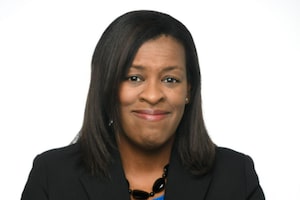One option is to build up cash within the non-registered portfolio throughout the year, such as dividend income paid out by some securities, to funnel back into a TFSA.
Sign up for the Globe Advisor weekly newsletter for professional financial advisors on our sign-up page. Get exclusive investment industry news and insights, the week’s top headlines, and what you and your clients need to know. For more from Globe Advisor, visit our homepage.
The annual limit for tax-free savings account (TFSA) contributions increased to $7,000 this year from $6,500 in 2023, and a big dilemma for those with average incomes is finding the money to make this top-up.
Frank DiPietro, assistant vice president, tax and estate planning at Mackenzie Investments in Toronto, says some clients have cash available to earmark for a TFSA contribution on the first day it officially opens up. But if they don’t have savings available, there are opportunities to explore other avenues.
“You can redirect money [from a non-registered account], which is taxable, to a tax-exempt [TFSA],” he says.
Mitchell Shields, wealth advisor, senior financial planner and insurance advisor with Team LWC at Canaccord Genuity Wealth Management Canada in Oakville, Ont., notes that some investors have multiple accounts at various financial institutions. As such, there can be a tendency to sit on cash and not rebalance assets properly.
“You would be remiss to leave that [TFSA contribution room] on the table,” Mr. Shield says. “It may be an opportune time to shift some of the non-registered investments into TFSAs.”
There may have been times in the past when clients hesitated to do that if there were “baked-in” capital gains, but a lot of people are sitting on capital losses right now, he adds.
Still, Mr. DiPietro notes advisors need to be cognizant of the tax planning required to shift money from a non-registered account to a TFSA. One strategy is directly transferring assets in kind, but it’s not as simple as it sounds. First, it depends on whether the original investments are in a gain or loss position. In the case of a gain, there will be a disposition.
He says advisors need to figure out one main question for a client in this predicament.
“What are they going to give up in terms of taxes today versus what they may gain from potentially receiving tax-free growth and income in the future?” he asks.
How to choose the right investments
Another consideration is being mindful of which investments to liquidate or transfer to a TFSA. He suggests looking at ones that haven’t appreciated that much.
While losing investments may sound like a no-brainer to avoid the taxes, there are strategies to consider, Mr. DiPietro cautions. He notes the example of a direct transfer of a declining investment to a TFSA with no conversion to cash first.
“Those investments are in a loss position and there’s a special rule in the Income Tax Act that will deny that capital loss,” he notes. “The investor won’t reap any of the tax benefits that come from realizing that capital loss if they do an in-kind transfer.”
The advisor may instead liquidate the losing investments, which allows the client to claim the loss. If the plan from there is to purchase different investments than before, there’s no issue. But holding the same investments means following the superficial loss rule, for which an investor must wait 30 days to repurchase the investments.
“If you don’t, the superficial loss rules will deny that capital loss because you purchased it too soon within the TFSA,” Mr. DiPietro says.
Having a cash buffer in portfolios
Another option is to build up cash within the non-registered portfolio throughout the year. For example, the client could use dividend income paid out by some securities to funnel back into a TFSA.
“Doing so means you don’t have to worry about some of these tax rules that can get investors into hot water or create unnecessary taxes along the way,” he says. “Taking dividends without reinvesting them and building up a bit of cash can make sense.”
Mr. Shields sees wealthier clients topping up TFSAs not just for themselves but also for their children and grandchildren. The rationale is to help younger generations be set up financially for the future. While a generous gesture, Mr. Shields advises these clients to keep in mind that once the money is in their kids’ accounts, it belongs to the kids, who may or may not make responsible choices.
“They have to be comfortable with the gift and be confident that the children will be prudent with those funds,” he says. “Because, if a child wants to withdraw all the money out of their TFSA, it’s no longer up to the parents at that point.”
For more from Globe Advisor, visit our homepage.
 Deanne Gage
Deanne Gage